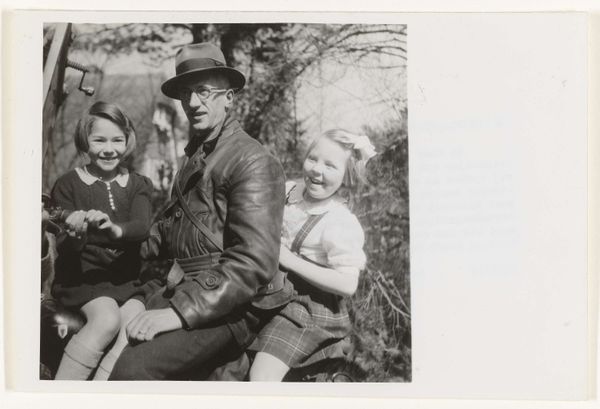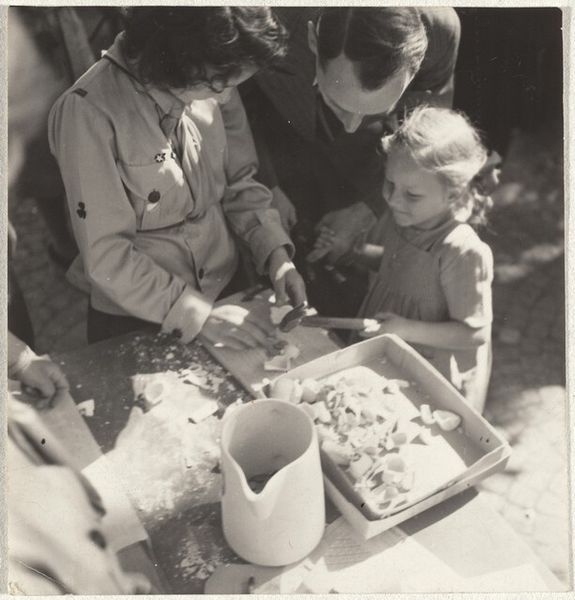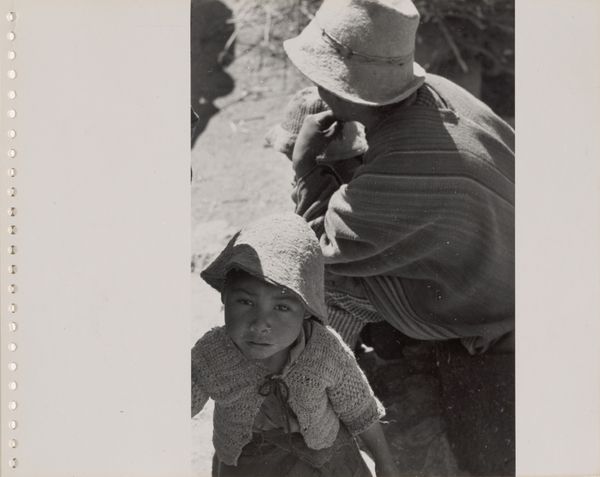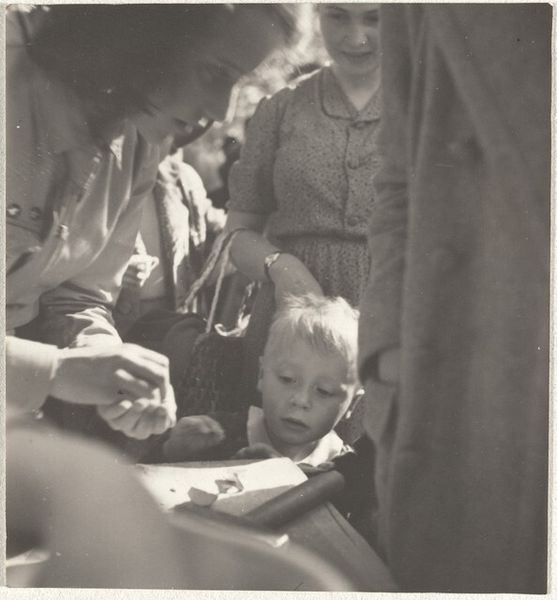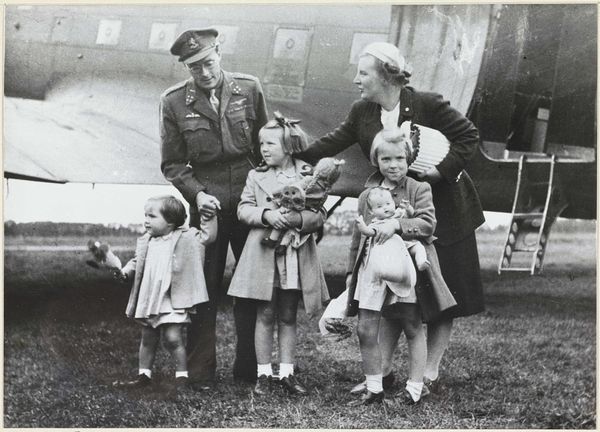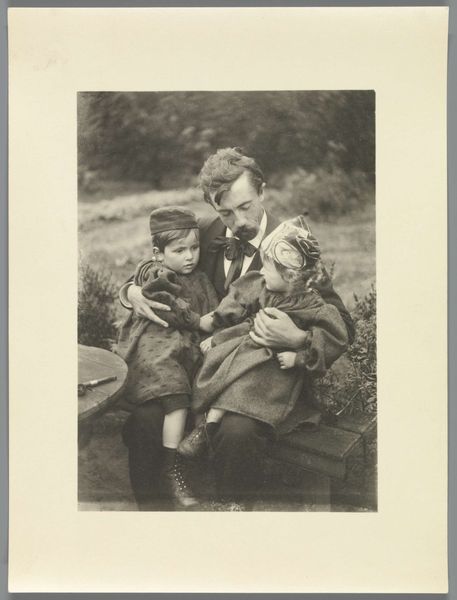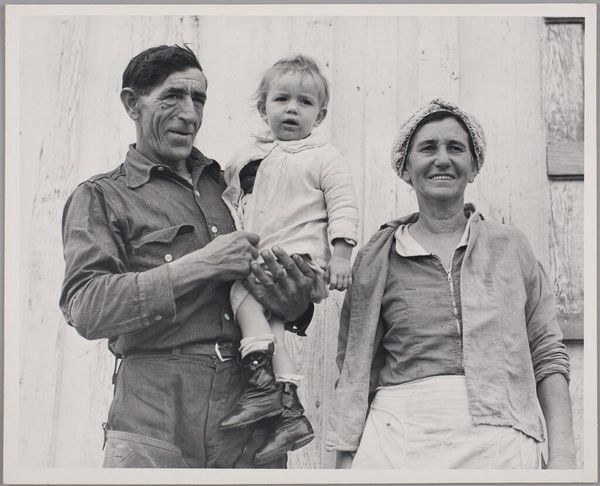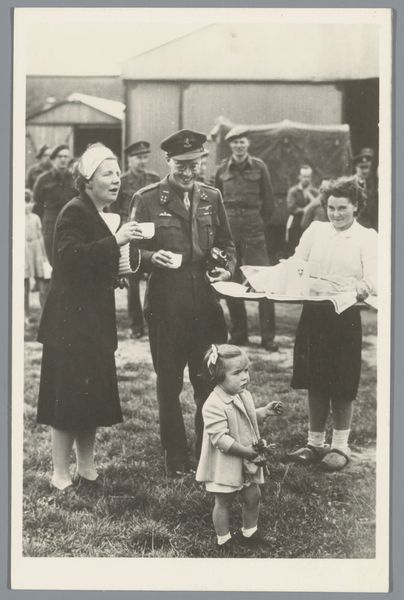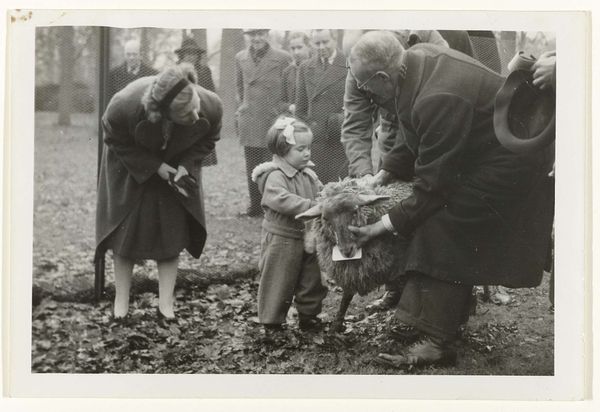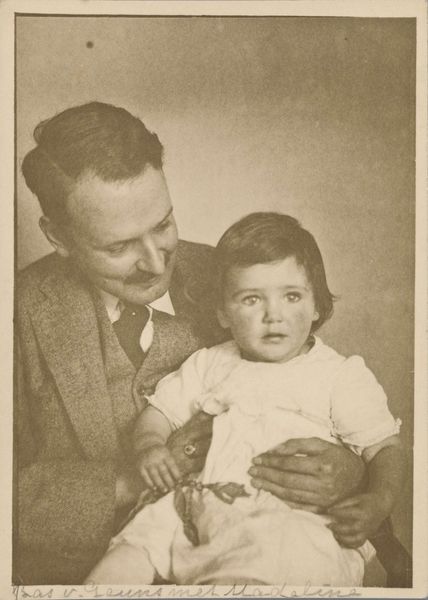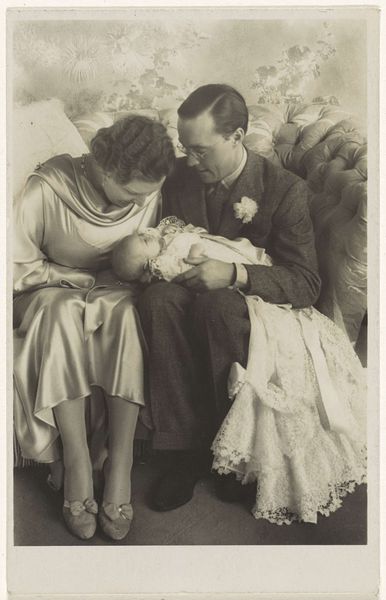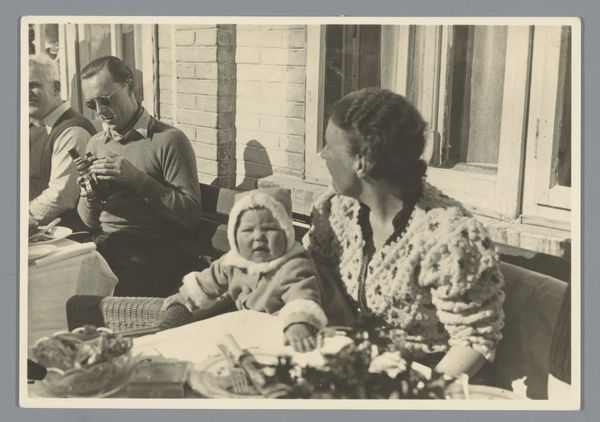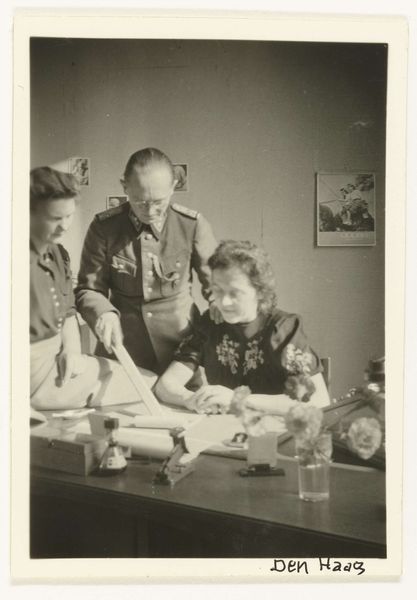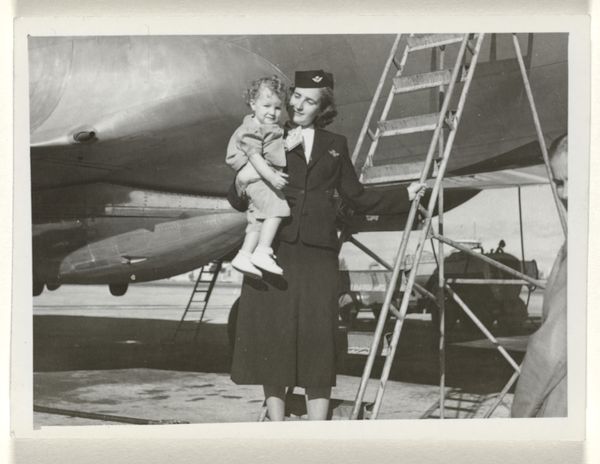
photography, gelatin-silver-print
#
portrait
#
archive photography
#
photography
#
historical photography
#
gelatin-silver-print
#
monochrome photography
#
monochrome
Dimensions: height 24 cm, width 18 cm
Copyright: Rijks Museum: Open Domain
Curator: Here we have a gelatin-silver print titled "Prinses Margriet weer thuis," attributed to Atelier de Jong and created sometime between 1945 and 1948. Editor: The first thing that strikes me is the tenderness in this image. It feels very intimate. The tones in the monochrome palette lend the whole piece a feeling of old-world grace. Curator: Indeed. It’s important to remember the historical context here. Princess Margriet was born in Canada during the Second World War while the Dutch royal family was in exile. The symbolic weight of her birth in liberating allied territory—in Ottawa, which was temporarily declared Dutch territory to ensure she'd have Dutch citizenship—is immense. Editor: The child is certainly the visual and emotional focus. I note how she looks at the object, the lens of the camera it seems, with great curiosity, with the older man crouched at her level also engaging directly. It is about a circle of protection around the royal heir. Curator: Precisely. Images like this cemented the restored monarchy's connection with its people following a traumatic occupation. They were carefully crafted visual tools. It is no accident that the photographer focused so heavily on portraying innocence, normalcy, and most of all, homecoming. The return and integration of the Dutch monarchy after years of war, occupation and displacement of its most visible symbols would have been hugely influential for those who saw it in media releases. Editor: This image certainly captures the public's sentiment during that period. One wonders how they viewed these carefully crafted representations after they settled back into relative peacetime after so much struggle. Curator: The symbolism of the moment carries forward even today, it shows the power of constructed images. This photography functions as an active document, revealing cultural memories and values, making a case for its role within history. Editor: Absolutely, and as a lasting historical artefact it prompts vital questions regarding photography’s societal and symbolic role through time. The photograph presents so many opportunities for exploring the impact on postwar life, memories, or national image creation, doesn't it?
Comments
No comments
Be the first to comment and join the conversation on the ultimate creative platform.
